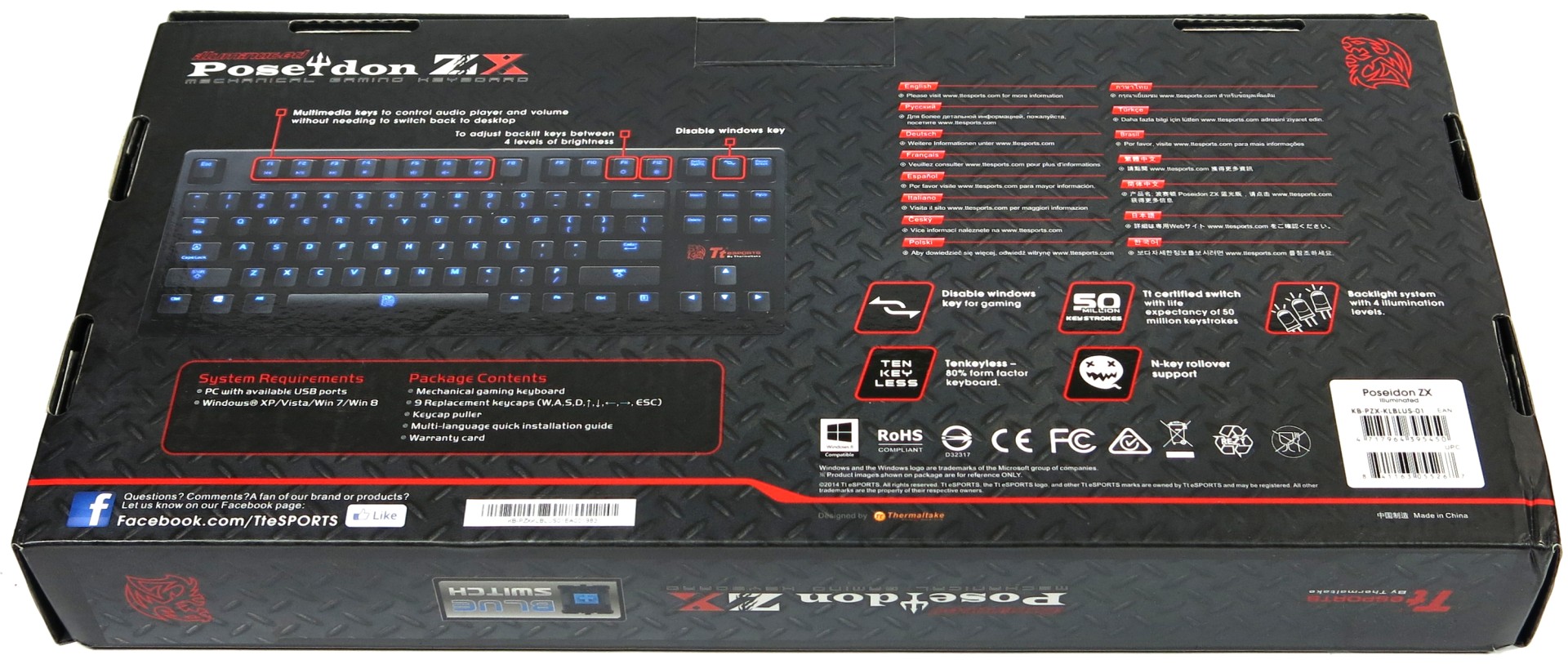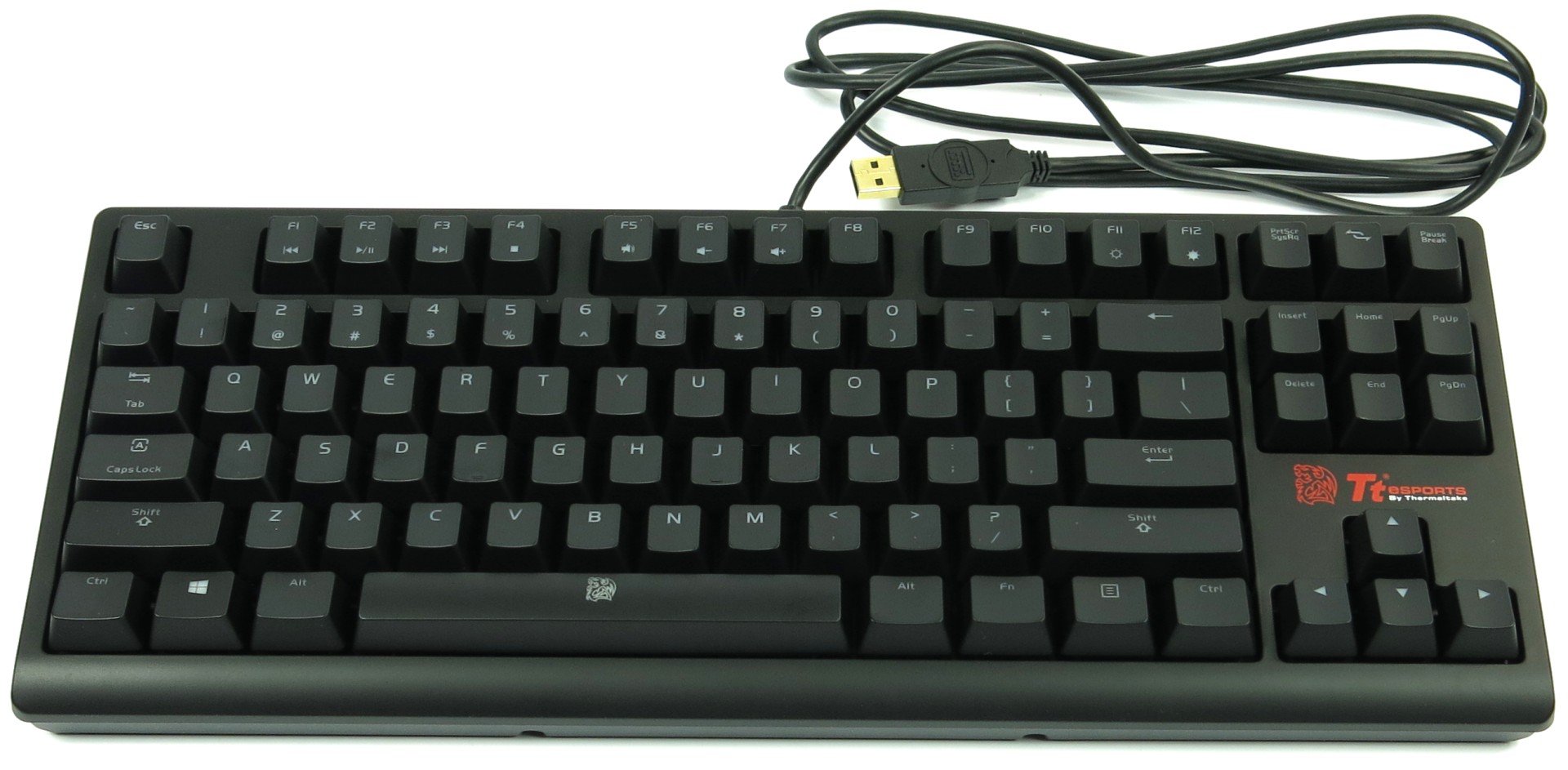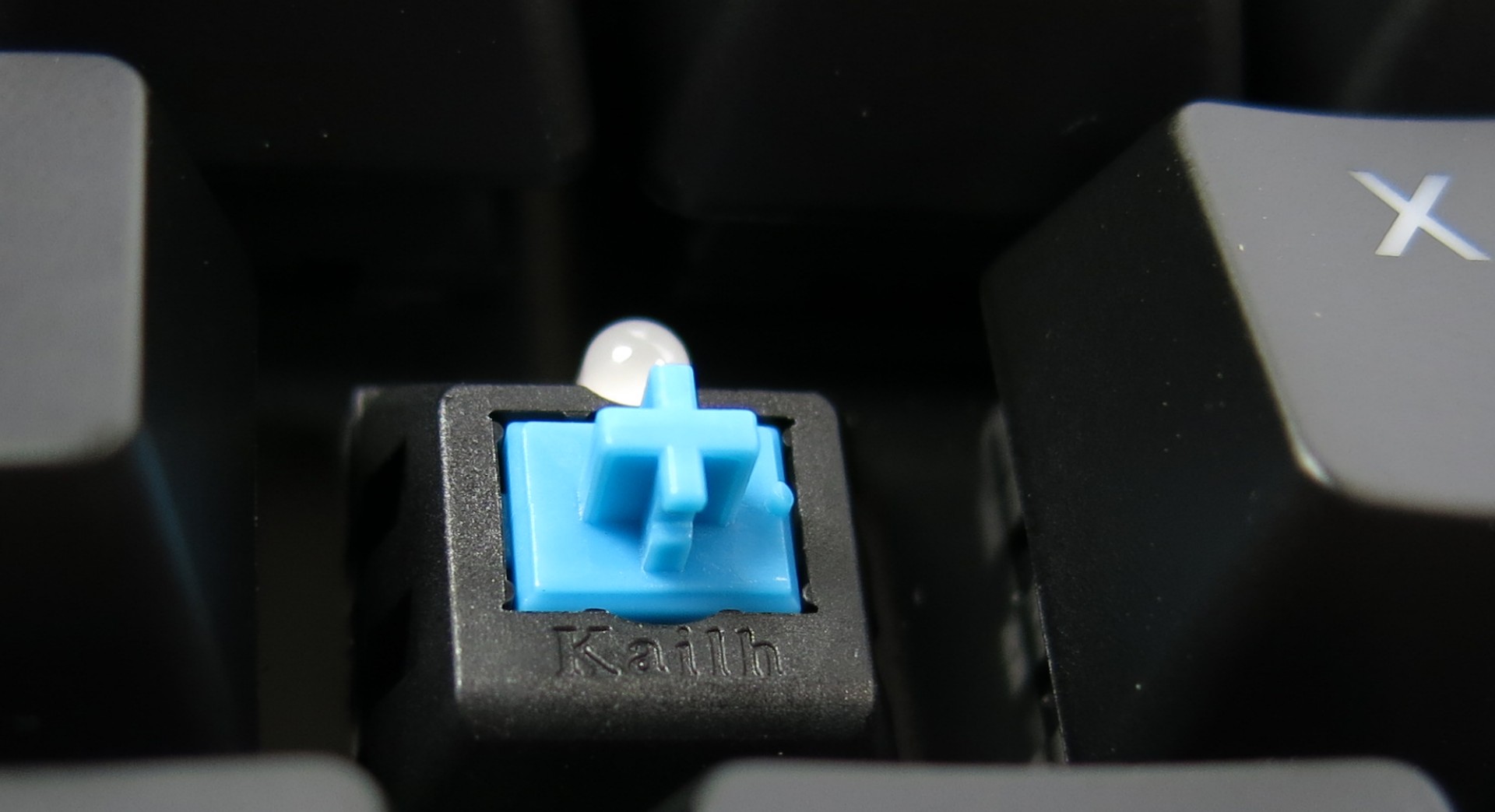Tt eSports by Thermaltake Poseidon ZX Review
Terms like “tenkeyless” and “80% form factor” mean simply, a keyboard without the number pad — and this format isn’t just popular with gamers.
Keys and Lighting: Kailh, not Cherry?
Copy or Competing Product?
Answering this question isn’t as easy as one might think. The Kalih coloring system is identical to Cherry, which was probably done on purpose, but the feel of the switches is somewhat different. Kailh isn’t new to the field of switches. For almost 24 years, they’ve been making everything that clicks and clacks in a wide variety of industries.
The difference between Cherry MX Blue and Kailh Blue lies in the small details of the spring and the characteristics of the switch. It’s barely perceptible while writing, which is also reflected in the almost-identical specifications and curves presented in the diagrams below.
Cherry MX-Blue
Kailh Blue
Switch Type:
Tactile Feel, "Click" Differential Movement
Switch Type:
Tactile Feel, "Click" Differential Movement
Get Tom's Hardware's best news and in-depth reviews, straight to your inbox.
Switch Actuation Feedback Character:
Precisely Felt
Switch Actuation Feedback Character:
Precisely Felt
Switch Actuation Travel:
2 mm from Initial Position
4 mm Total
Switch Actuation Travel:
2 mm from Initial Position
4 mm Total
Actuation Force:
50 g to Depress Key
App. 60 g Peak Force to Actuate Switch
Actuation Force:
50 g to Depress Key
App. 60 g Peak Force to Actuate Switch
The only thing that really jumps out in a direct comparison is the resistance after the actuation point — passing it isn’t as pronounced for the Kailh Blue. This can actually be a good thing, since it lessens any problems with bottoming out. With a bit of training, there might even come a point where writing becomes a bit quieter, since less force is used intuitively. Don’t get us wrong, though, this is still a tactile switch with a very pronounced actuation point.
The keycaps are okay and pretty much what you would expect. The letters are recessed as per the usual solution, but the colors’ finish is quite thin. How durable these ABS keycaps will turn out to be is anyone’s guess. We can’t really do a practical test in our lab without going long term. Consequently, we chose the second-best option and tried to simulate long-term use with a buffing wheel. The color withstood this treatment for one minute. This gives us at least a bit of hope, since we’ve seen much worse.
Another question that can’t really be answered at this point is if the mechanical durability suffers due to the shorter pieces in the keycaps. The OEM has made the keycaps even more minimalistic, which makes them a lot simpler and cleaner-looking than those built into keyboards by other manufacturers.
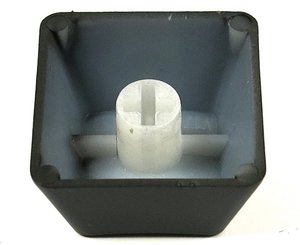
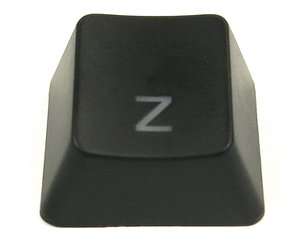
Font, Readability and Lighting
The font used on the keys is clear and easy to read. The manufacturer actually put some thought into this, and it shows. It’s a nice change of pace from the frippery that others like to engage in when it comes to their key labels. The lighting isn’t as optimally done due to how the keys are built. The characters are on the lower half of the keys, whereas the LEDs are positioned at the top. It’s not really much of a problem, though.
Unfortunately, there isn't any lighting for the Caps Lock and Scroll Lock keys. These keys are only lit if they’re activated, in which case they stay lit. Otherwise, complete darkness is all that greets the user. This choice might be controversial, but it’s certainly one way of doing things.
The brightness can be adjusted in several steps using the Fn and F11/F12 keys, which is good enough. The bright blue LEDs, in combination with the perfectly shaped letters, result in a very easily readable keyboard, no matter the ambient light level.
N-Key Rollover
The Tt eSports by Thermaltake Poseidon ZX avoids both ghosting and jamming perfectly.
PS/2 and USB Issues
The Poseidon ZX "Tenkeyless" doesn’t feature the two-device solution that would have been the ideal way to transfer data. Consequently, it’s a pure 6KRO keyboard.
Current page: Keys and Lighting: Kailh, not Cherry?
Prev Page Look and Feel, Usability and Functionality Next Page A Solid Tenkeyless Offering
Igor Wallossek wrote a wide variety of hardware articles for Tom's Hardware, with a strong focus on technical analysis and in-depth reviews. His contributions have spanned a broad spectrum of PC components, including GPUs, CPUs, workstations, and PC builds. His insightful articles provide readers with detailed knowledge to make informed decisions in the ever-evolving tech landscape
